Sichuan chili bean paste (aka spicy doubanjiang) is a versatile ingredient used in many classic Sichuan dishes. This complete guide helps you to source, use and substitute.
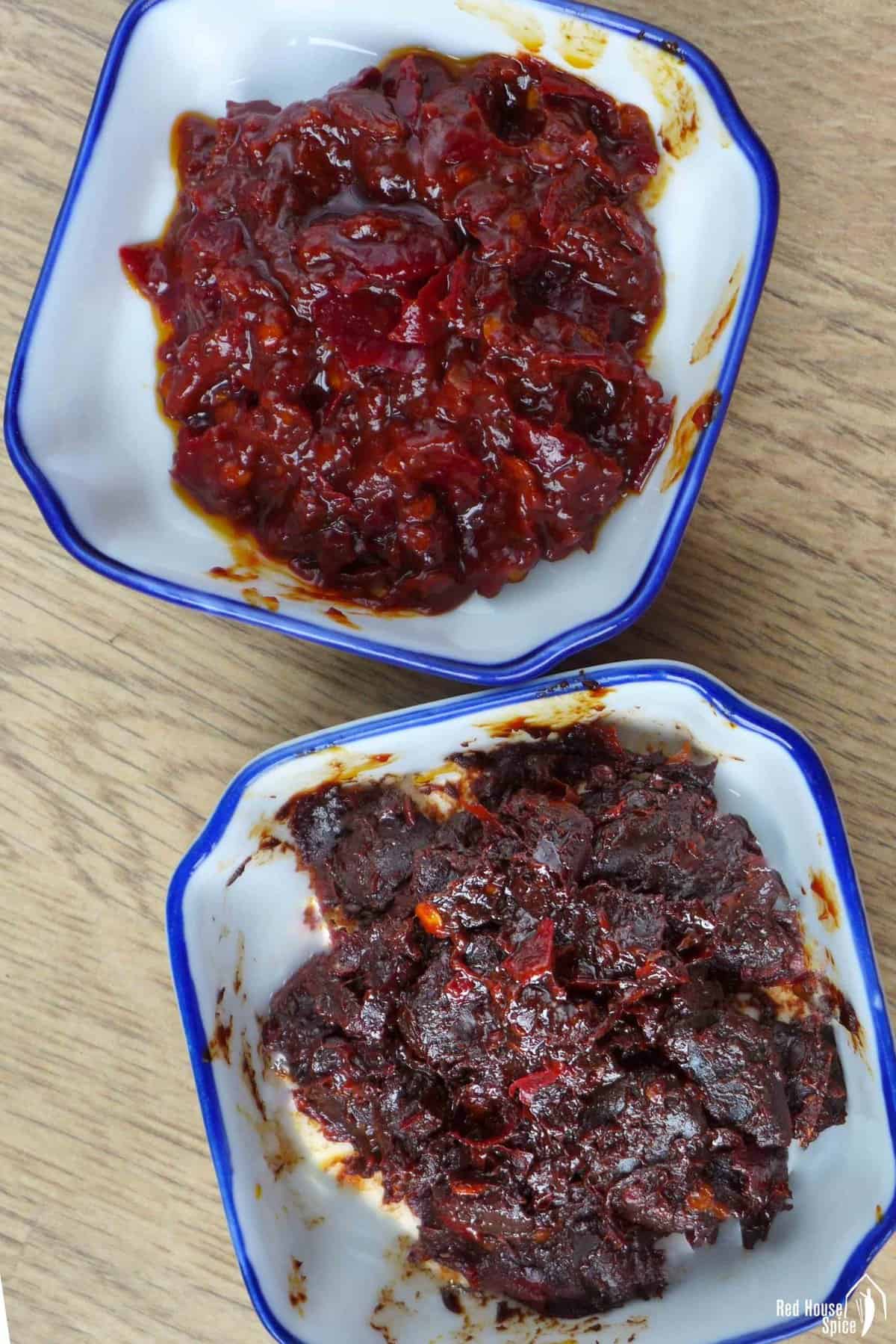
Jump to:
One of the most iconic Chinese condiments, Sichuan chili bean paste (aka spicy doubanjiang, là dòu bàn jiàng/辣豆瓣酱) imparts a rich umami, earthy taste and an aromatic spiciness to any dish it is added to. It is to the Sichuanese what soy sauce is to Cantonese, and black rice vinegar is to Northern Chinese.
It’s an ingredient unlike any other, with a unique blend of flavours that is a trademark of Sichuan cuisine. This is a guide to help you know:
- What it is and what it tastes like
- How to source and identify the best variety
- Its uses and possible substitutes
What is Sichuan chili bean paste?
Sichuan chili bean paste is a thick, dark red, salty paste made mainly of fermented broad beans and hot red chili peppers. It also contains wheat flour, salt, and sometimes a small percentage of soybeans.
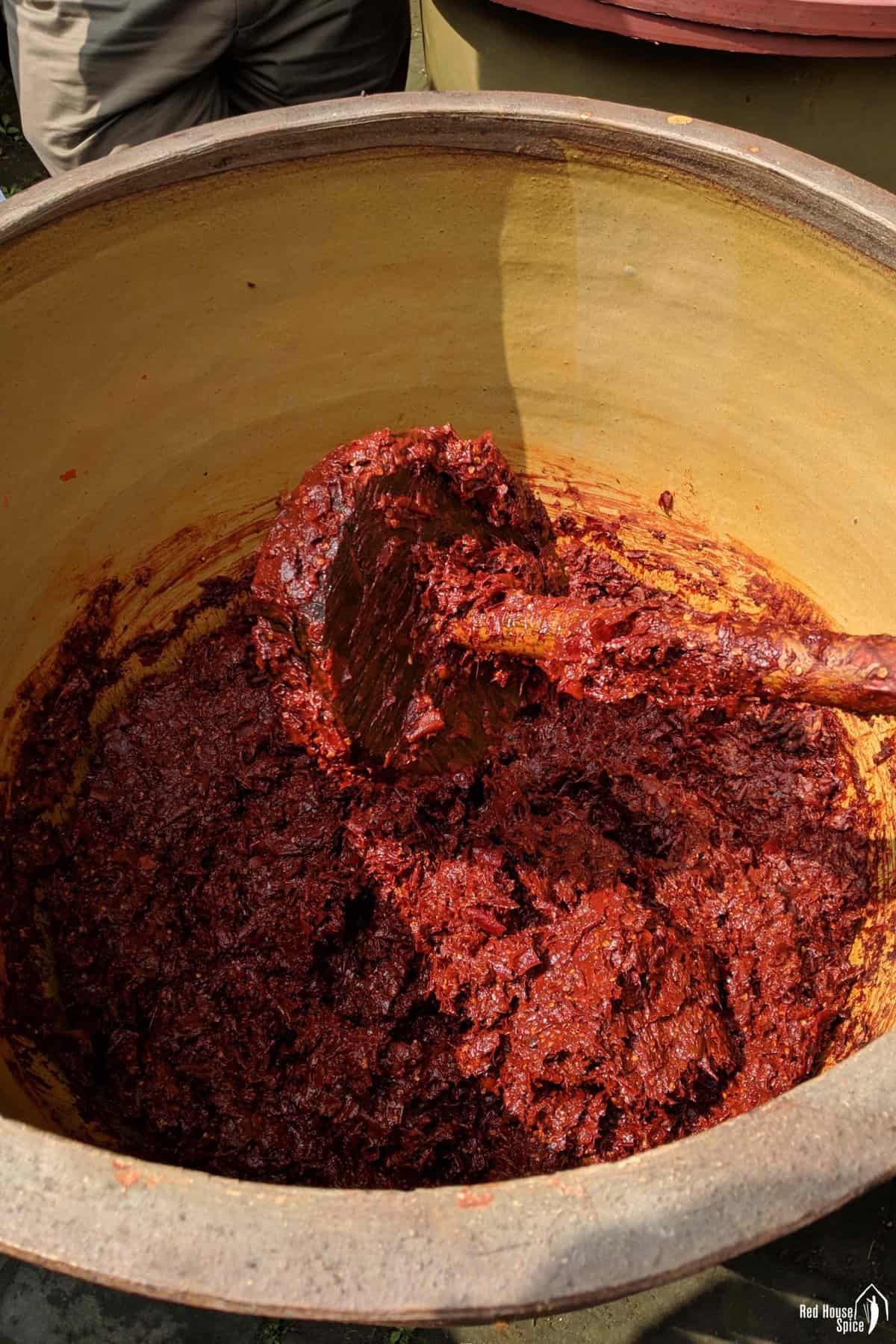
The long fermentation process gives the paste a pronounced savoury, earthy, umami flavour, and a mellow, aromatic spicy taste. Used as a critical ingredient in a wide variety of dishes, it is considered the soul of Sichuan cooking, an all-around flavour booster that makes dishes stand out.
Do not confuse it with other bean pastes/sauces from different parts of China and Asian countries. For example, yellow bean sauce/黄豆酱 commonly used in Northern Chinese cuisine which is made of soybeans, or gochujang, a popular Korean sauce which is made of chilli peppers and has a rather sweet taste.
The best variety
You can find products made in different regions all labelled as chili bean paste or doubanjiang. Among them, Pixian Douban (郫县豆瓣) is hands down the best variety out there.
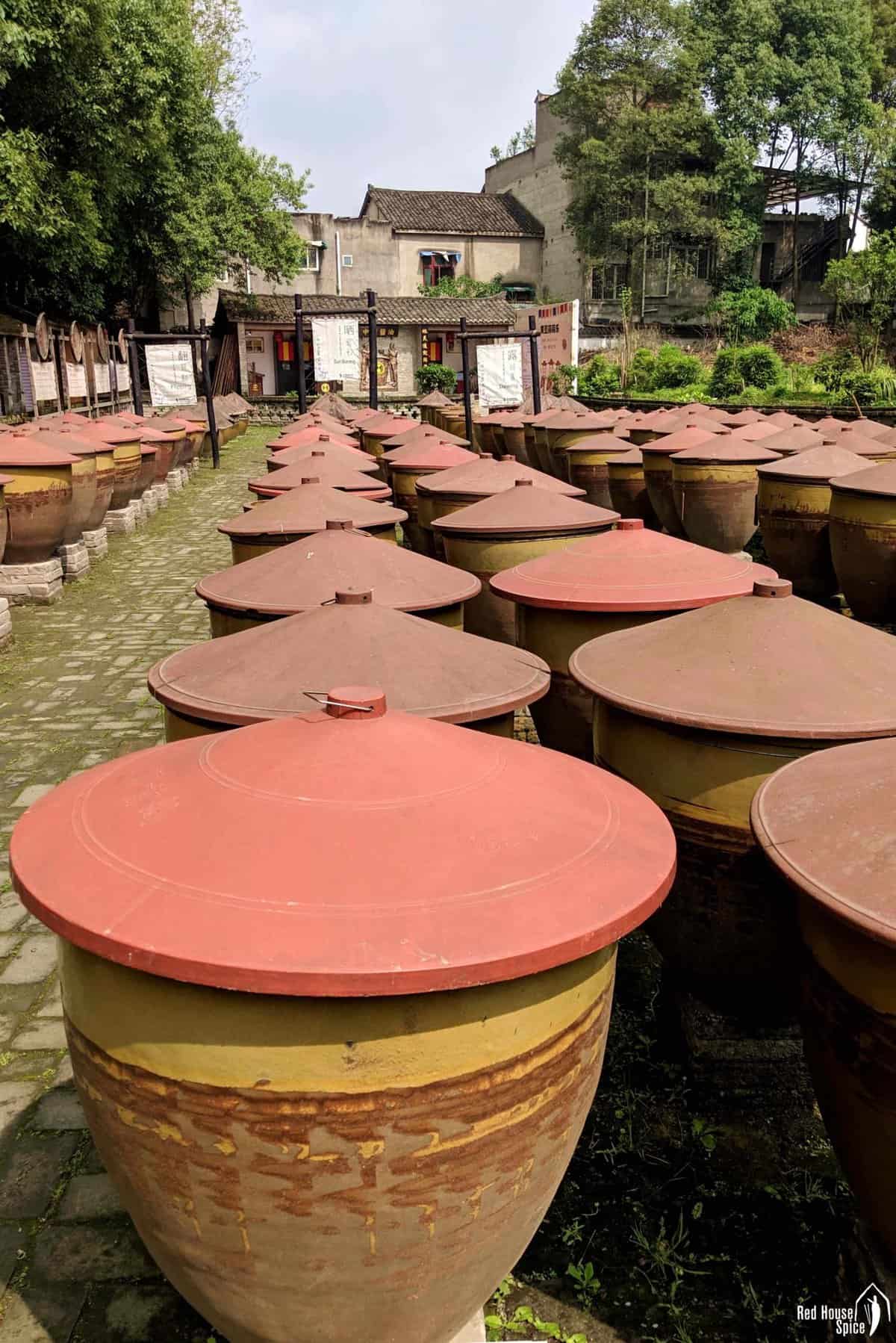
It’s named after Pixian, a county in Sichuan province which is considered the home to this unique condiment. What contributes to its high quality? The traditional fermentation process, well-sourced chili pepper and the unique environmental setting are believed to be the key factors.
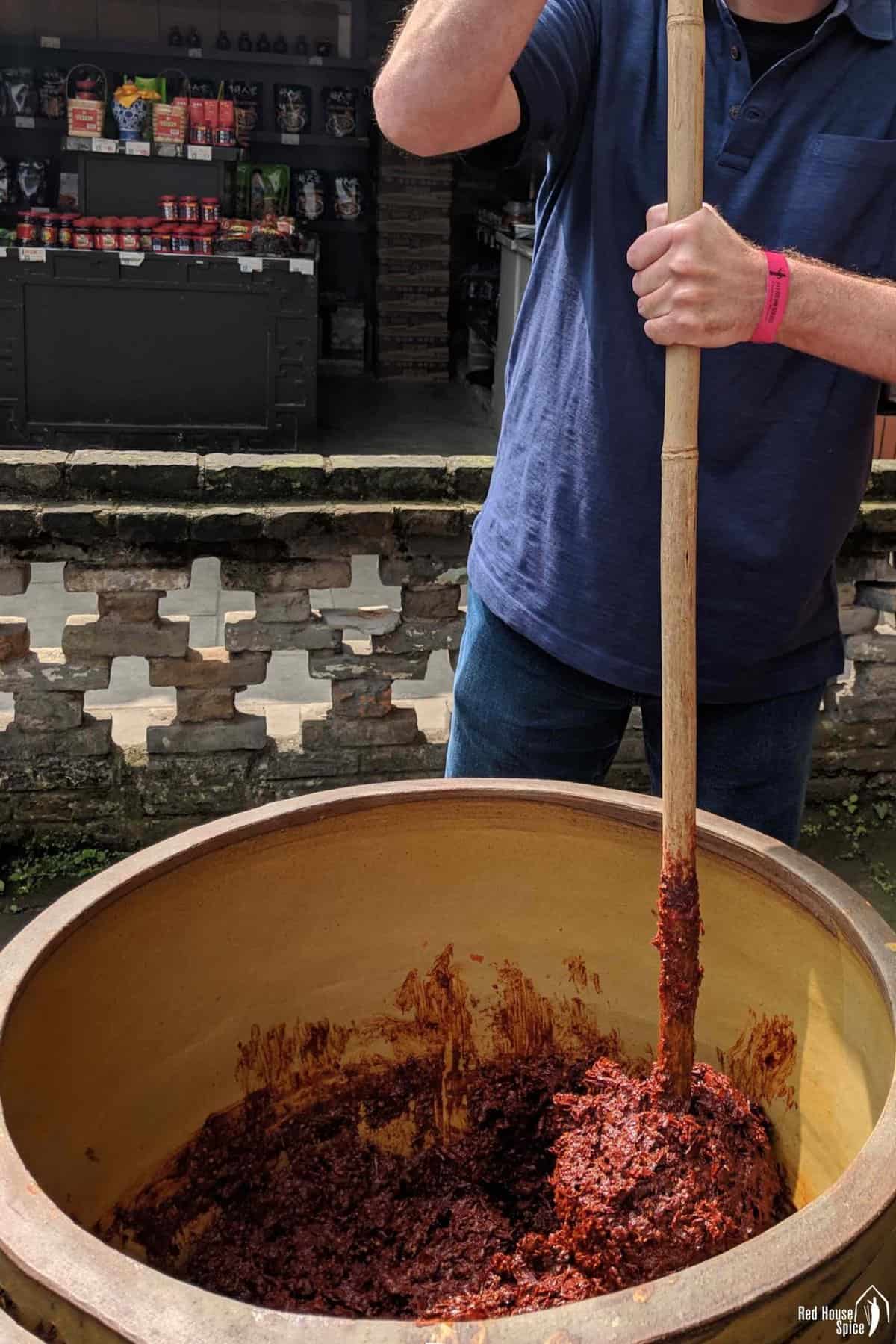
The images above was taken in Pixian (known as Pidu District of Chengdu city since 2016) on one of my Culinary Tours of China. Broad beans, fresh chili peppers, wheat flour, salt and water are stored in these huge earthenware pots. The mixture is periodically pounded and sun-dried throughout the fermentation process.
There are two common types of Pixian Douban that you can find in Chinese stores:
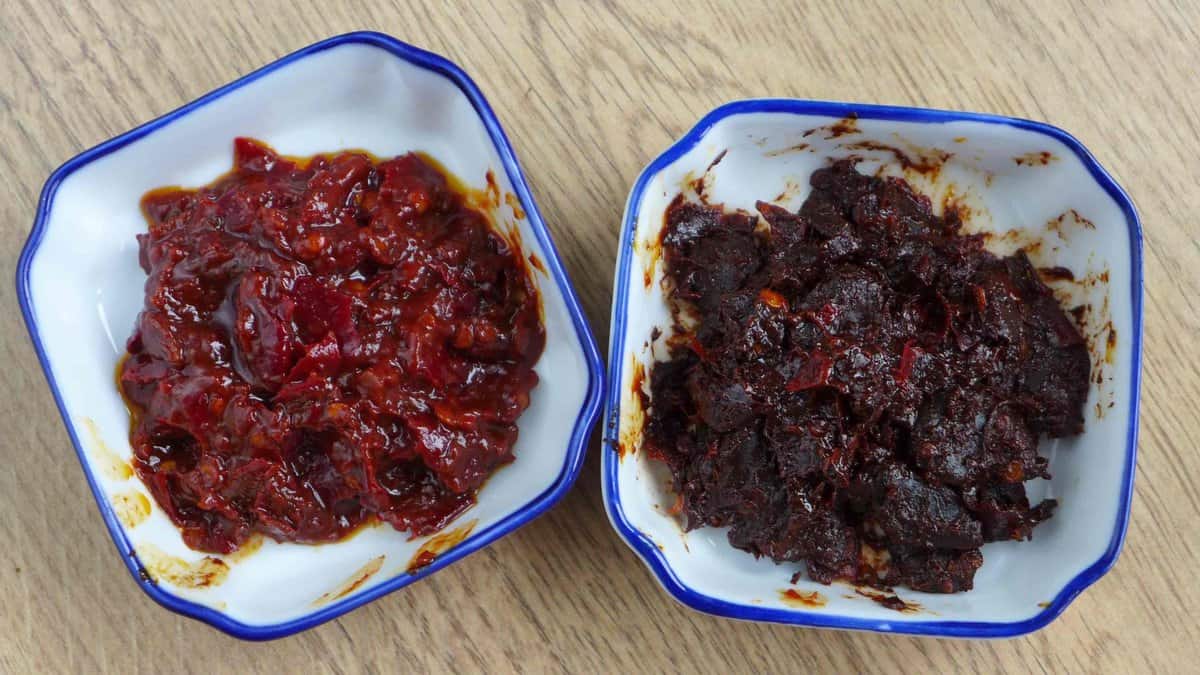
- The regular version (right in the image above). It’s the basic paste coming out of the fermentation pot without added ingredients. It has a dark red hue and a dense texture. The label on the package/jar usually shows its generic name Pixian Douban/郫县豆瓣.
- The red oil version (left in the image above). It’s a mixture of the basic paste and Sichuan chilli oil which has a vibrant red colour, a softer consistency and a spicier taste than the regular version. It’s known as Hong You Dou ban/红油豆瓣 in Chinese and its English name on the packaging is usually shown as “Hot Broad Bean Paste”.
Personally, I prefer the red oil version as it adds more fragrance, spiciness and colours to dishes which I appreciate very much.
Purchasing tips
In English, Sichuan chili bean paste is known under several different names:
- Broad bean paste
- Spicy bean paste
- Chili bean sauce
- (hot) Broad bean paste/sauce
- (spicy) Doubanjiang,
- Tobanjiang
The quick way to identify it is to check if broad beans (aka fava beans) are No.1 on the ingredient list.
You should be able to find it in Chinese or Asian speciality stores in your local area. I’ve seen it packed either in jars or in sachets inside paper packaging. Do not fret if you cannot find any near you. It’s also available on major online shopping platforms like Amazon.
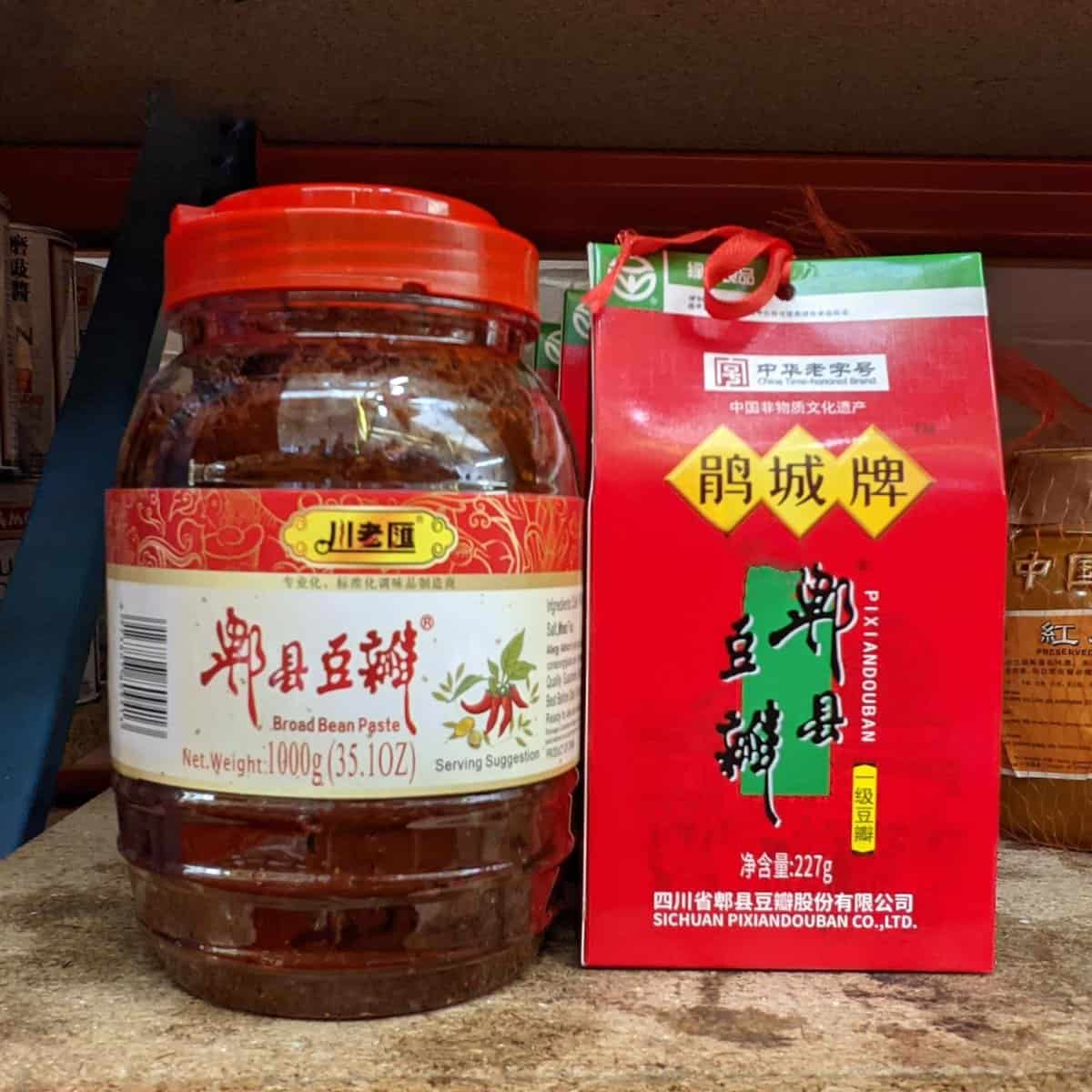
As I mentioned above, buy Pixian Douban/郫县豆瓣 (see image above) if available (N.B. It can be produced under different brand names). Show this name to the shop assistant for help if you find it hard to locate the correct one.
Although I love many sauces and condiments produced by the brand Lee Kum Kee/李锦记, their Chili Bean Sauce (辣豆瓣酱/Toban Djan) wouldn’t be my first choice. I find it overly salty and lacking a complex aroma.
How to use it
Sichuan chili bean paste can be used in so many delicious ways. It’s most commonly found in stir-fries, braised dishes/stews, or noodles with a rich broth. To release its best flavour, fry it in a little oil, along with spices and aromatics like garlic, ginger, etc, before adding the main ingredients of the dish, proteins and/or vegetables.
Some versions of the paste, particularly the regular Pixian Douban, are quite coarse in texture. In this case, I recommend you chop it to a finer consistency before cooking. This will improve the general mouthfeel of the dish. Also, it helps to maximise its flavour.
🛎 N.B. Unlike many other Chinese condiments, Sichuan chilli bean paste isn’t supposed to be consumed raw, e.g. as a dipping sauce or in a salad dressing.
Classic dishes to try
Here are some of my favourite recipes that feature Sichuan chili bean paste:

- Mapo tofu is one of the most popular signature dishes of Sichuan cuisine. Chili bean paste gives it that characteristic spiciness and appetising red colour.
- Twice-cooked Pork Belly shares a similar flavour profile as Mapo tofu. It also pairs chili bean paste with fermented black beans, another iconic ingredient.
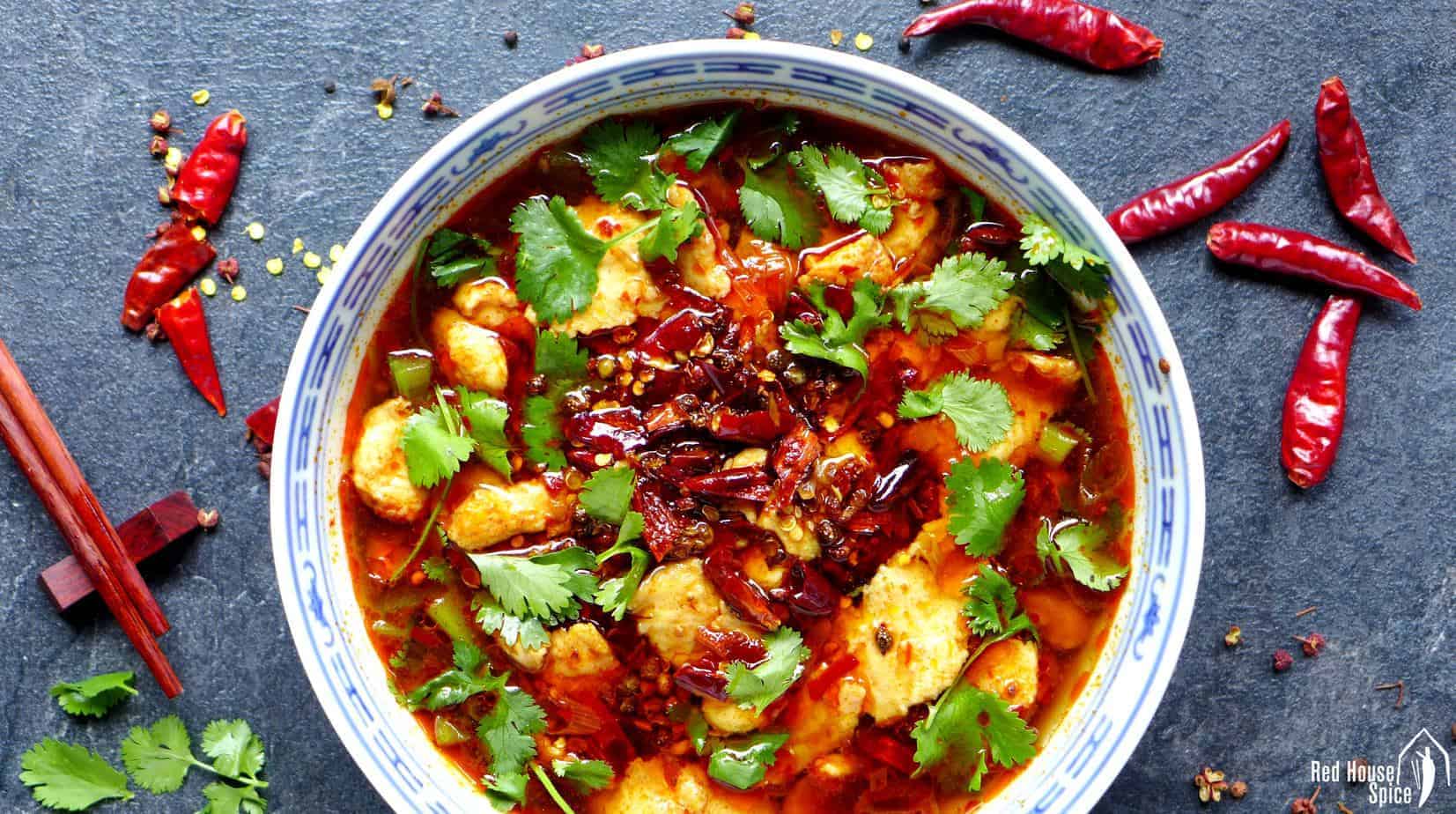
- Sichuan boiled fish & Sichuan boiled beef are made with tender fish or beef slices in a numbingly spicy broth seasoned with chili bean paste, toasted dried chilli, Sichuan pepper, etc. They are irresistibly delicious!
- Sichuan Braised Tofu is a popular home-style tofu dish using chili bean paste as part of the braising sauce.

- Sichuan Hot Pot Broth isn’t considered authentic without chili bean paste which acts as the source of pronounced aroma and saltiness.
- Sichuan vermicelli stir-fry features thin starch noodles that are excellent at absorbing the flavours of chili bean paste.
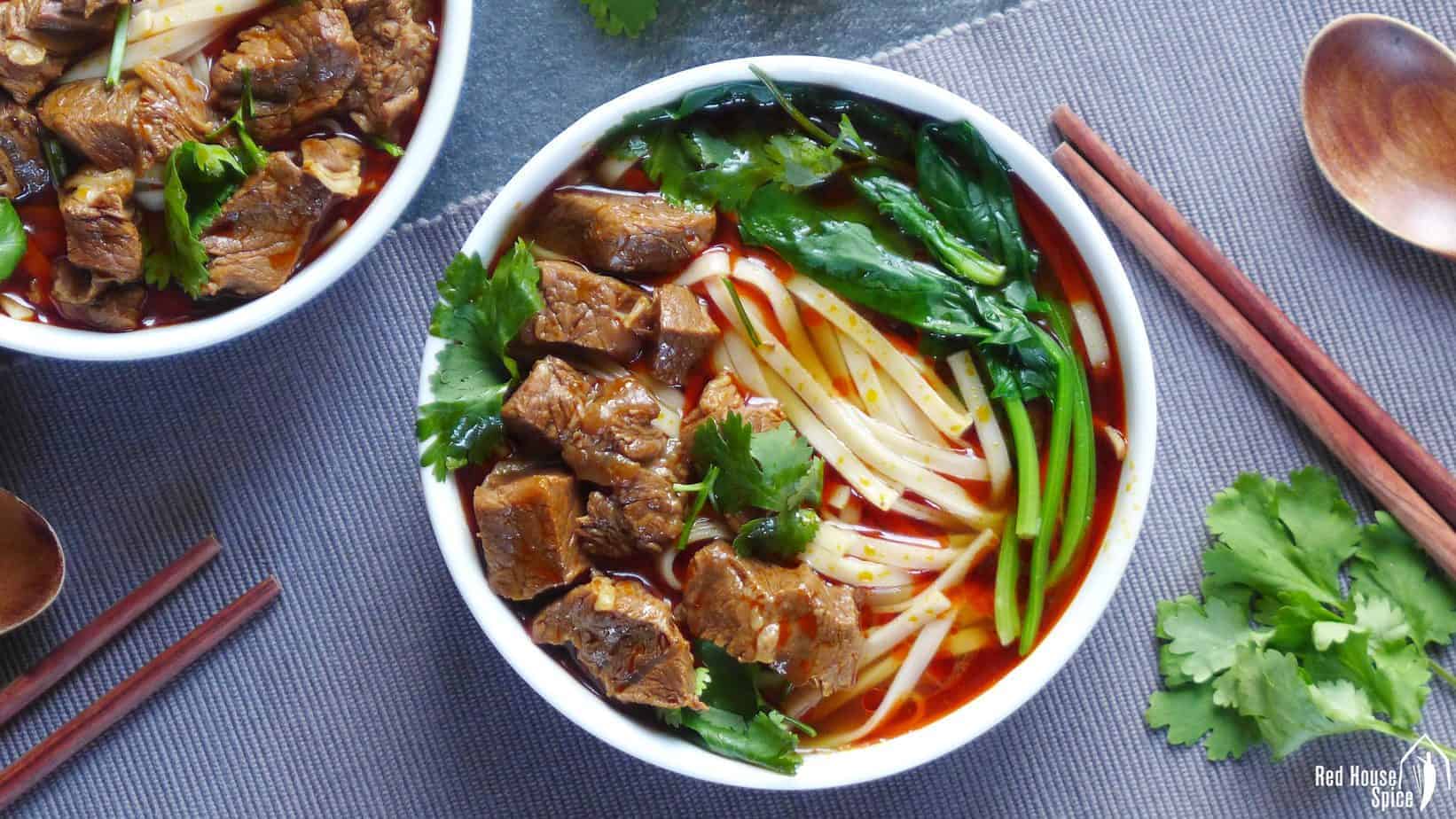
- Spicy Beef Noodle Soup uses chili bean paste to make an umami-rich and spicy taste that pairs well with tender beef chunks.
How to substitute
I have yet to come across any seasoning that lives up to the intricate flavours of Sichuan chili bean paste. So I cannot name anything as an interchangeable ingredient that delivers a fairly similar taste.
However, if you are really craving a dish that calls for it, here are some alternatives you can consider. They taste quite different but still work for making a delicious dish.
- Use homemade Black Bean Sauce (particularly the spicy version), or shop-bought varieties like Laoganma black bean chili sauce (老干妈风味豆豉).
- Mix a bean-based, fermented paste/sauce (e.g. Chinese yellow bean sauce, Japanese miso, Korean doenjang) with a hot sauce, chili paste or Chinese chili oil.
🛎 N.B. You may need to adjust the quantity used in recipes as all these condiments have different levels of saltiness.
How to store
- If unopened: Sichuan chili bean paste lasts for a long time. Since it’s fermented, aged paste has a more complex flavour thus it’s preferable. That said, please always check the expiration date on the label and use it up within the period.
- If opened: Once you have opened a jar or packet of this paste, make sure to store it in the refrigerator to prolong its life. Always use a clean utensil when spooning out portions to prevent early spoilage. Place the lid back on tightly.




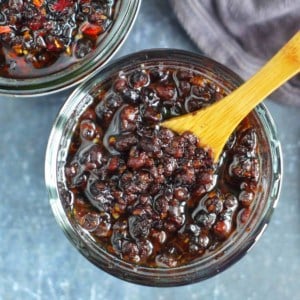
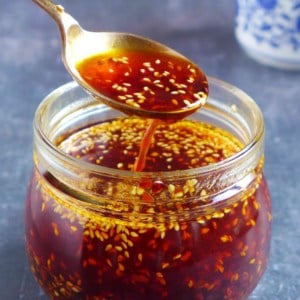
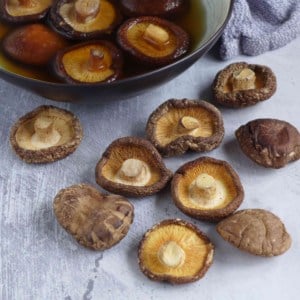
Thank you for sharing great information and resources. I look forward to making Sichuan boiled fish soon. You’ve helped to increase my confidence in making Chinese dishes.
Wish you a fun time exploring Chinese ingredients and dishes, Renee!